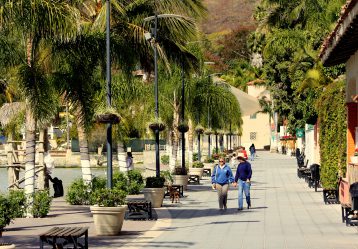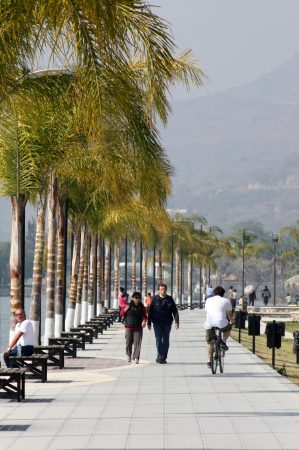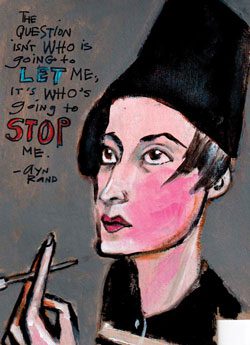Chapala Malecons
By Antonio Ramblés AKA Tony Passarello

 Something about the sight of a distant horizon anchored by an expanse of blue water makes a walk along the shoreline like no other walk. For most folks such a view is the stuff of which vacation memories are made. For anyone living along Lake Chapala’s northwest shore it’s an everyday sight from the ever-expanding public vantage point of walkways along its piers and seawalls… its malecons.
Something about the sight of a distant horizon anchored by an expanse of blue water makes a walk along the shoreline like no other walk. For most folks such a view is the stuff of which vacation memories are made. For anyone living along Lake Chapala’s northwest shore it’s an everyday sight from the ever-expanding public vantage point of walkways along its piers and seawalls… its malecons.
The malecon is a fixture of coastal cities in the Spanish-speaking world and in towns that grew up around them. Malecons are invariably community focal points. Those which I’ve found memorable include Barcelona, San JuanP.R., and Puerto Vallarta. (Havana’s on my bucket list!)
 In these towns the malecons often feel as if the perimeter of a plaza square has been unraveled to form a thread along the water’s edge, and the waterfront is an organic part of the city. The construction in recent years of malecons along Lake Chapala in San Antonio Tlayacapan, Ajijic, San Juan Cosala, and Jocotopec (and the renovation of the one in Chapala) has created miles of lakeshore promenades that reinforce the historic connection between the lake and these one-time fishing villages. There’s more at work here, though, than history reaffirmed.
In these towns the malecons often feel as if the perimeter of a plaza square has been unraveled to form a thread along the water’s edge, and the waterfront is an organic part of the city. The construction in recent years of malecons along Lake Chapala in San Antonio Tlayacapan, Ajijic, San Juan Cosala, and Jocotopec (and the renovation of the one in Chapala) has created miles of lakeshore promenades that reinforce the historic connection between the lake and these one-time fishing villages. There’s more at work here, though, than history reaffirmed.
 These malecons liberate walkers from traffic lights and street intersections; there’s just blue water on one side and a city sunning itself on the other. It’s a perspective that makes malecon-walkers in the city, but not of the city. On each malecon the cast of characters may vary little from one day to the next, but the foot traffic has its own seasons and ever-changing images of lake, city, sky, and mountains creates a kaleidoscope of endlessly unique tableaus.
These malecons liberate walkers from traffic lights and street intersections; there’s just blue water on one side and a city sunning itself on the other. It’s a perspective that makes malecon-walkers in the city, but not of the city. On each malecon the cast of characters may vary little from one day to the next, but the foot traffic has its own seasons and ever-changing images of lake, city, sky, and mountains creates a kaleidoscope of endlessly unique tableaus.
Malecons deliver a great slice of local life. Depending upon time of day and day of week those along Lake Chapala are inhabited by a mix of everyone from local working men and women to frugal pensioners, well-off expats, and Tapatios. The dog walkers, speed walkers, joggers, runners, bench-sitters and kibitzers are weekday morning fixtures. So are workday commuters on bicycle and on foot and children on their way to or from school; the malecon is also a sort of pedestrian libramiento.
The malecon takes on a new identity when the mix of local families and Tapatios dials itself up on weekends and holidays.

Perhaps most importantly, the malecon makes its walkers more alike for the duration of their shared experience than they are different in so many other ways.
 |
 |
 |
 |
 |
- October 2025 – Issue - September 29, 2025
- October 2025 – Articles - September 29, 2025
- October 2025 - September 29, 2025


 Discover trusted local services and hidden gems with our easy-to-use online directory.
Discover trusted local services and hidden gems with our easy-to-use online directory.

